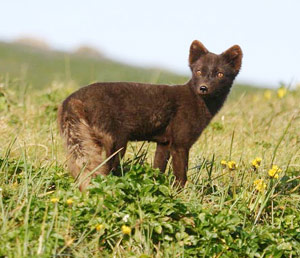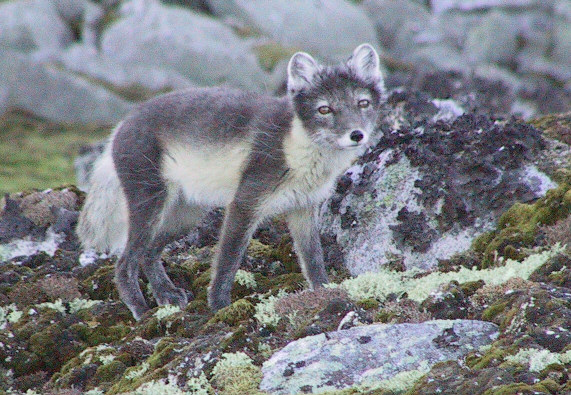How I Survive


The Arctic fox has adapted to its habitat in a variety of ways, making it a very interesting organism to study. The scientific name, Alopex lagopus, is actually a result of one of those adaptations. The word lagopus means "hare-footed" and refers to the long thick hairs covering the pad of the foot which prevent the fox from getting frost bite as it runs over the snow and ice. The Arctic fox occurs in two morphs, or colors, the white morph and the winter morph. The fox changes the color of its fur during the winter and summer months, allowing it to better blend in with its surroundings. On the islands, the blue morph is more common, with the winter color appearing as a pale blue grey and the summer color appearing as a dark chocolate brown or dark blue-gray. The white morph demonstrates a gray-brown back with a paler tail and stomach during the summer months and a pure white coat during the winter months. The different coat colors during the different seasons allow the fox to better blend in with the snow during the winter and the tundra flora during the summer.


